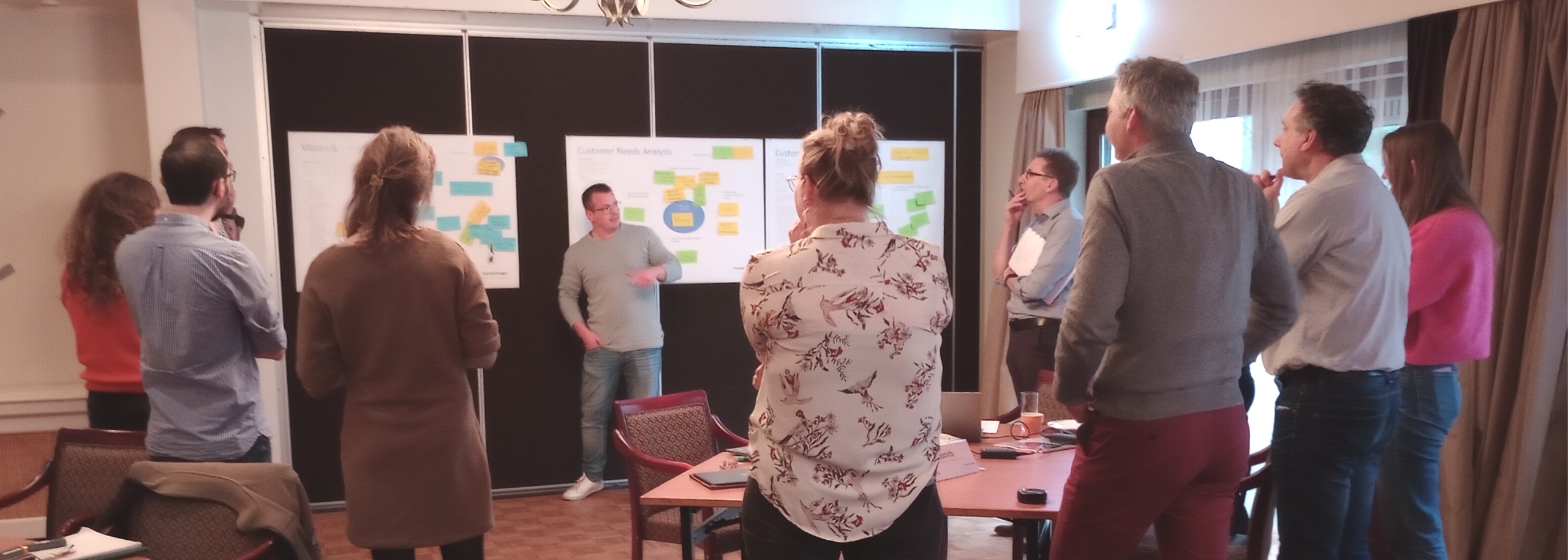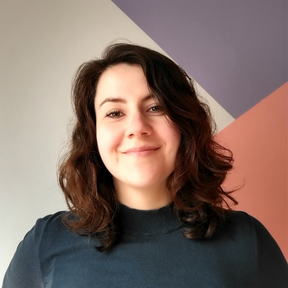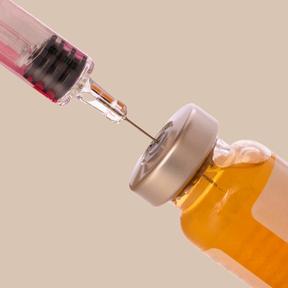In our recurring section of motivational blogs, scientists explain what motivates them to go against the current and develop animal-free alternatives. This time it is the turn of the research teams participating in the Proefdiervrij Venture Challenge 2023.
ARTIC, Fybrix, VEO and Chippoids are the research teams participating in the Proefdiervrij Venture Challenge, and are working to develop animal-free innovations. The goal of these teams is to create a world in which advanced animal-free models can be applied in the industry and will replace the use of animals in research.
In this article, Jaap, Lotte, Giulia and Bas explain what they think about participating in the Proefdiervrij Venture Challenge, and how they want to increase the impact of animal-free research.
ARTIC: “Why is laboratory animal research even necessary?”
ARTIC, a team of researchers and entrepreneurs from TU Eindhoven, is developing a toolbox of microtechnologies that can be used in animal-free models. The aim of this toolbox is to have a wide range of tools and technologies to use in developing non-animal methods, such as organs-on-chips, for use within studies that do not require laboratory animals.
“We have a whole toolbox of methods, one of which is Magnetic Artificial Cilia (MAC),” explains Prof Jaap den Toonder of ARTIC. MAC are small, hair-like structures that can move and manipulate liquids. An important application of these artificial cilia is to stimulate the supply of liquids (perfusion) in organs-on-chips.
Creating a world in which no animals are tested for humans
“Laboratory animals? As an engineer, you don’t know much about them until you meet Proefdiervrij”, says Jaap. He saw images of laboratory animals and heard stories about how laboratory animal research is done, and that got him and his team thinking, “Why is this actually necessary?” ARTIC saw that there are already many advanced organ models, such as organs-on-chips, but the problem is that there is simply too little application in industry. ARTIC wants to create a world where state-of-the-art micro-technologies are applicable in industry, and in doing so, they want to create a world so advanced that no animals are tested for human purposes.
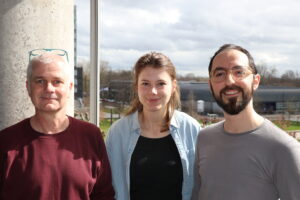
Fybrix aims to eliminate laboratory animals with scientific knowledge
Fybrix is a research team from Radboud University Nijmegen. The researchers in this group have developed a synthetic hydrogel that mimics the material surrounding our cells. This gel could replace the use of animal-derived gels, such as Matrigel, which require millions of mice to produce. “Because our gel mimics human tissue, we can study cells in the lab in a realistic, human environment,” says PhD student Lotte Gerrits of Fybrix. And subsequently, it can be used to study the effect of drugs or other substances on these cells.
Replacing millions of mice
In order to produce the existing gels used in research, such as Matrigel, millions of mice a year are bred and used. With their synthetic hydrogel, the Fybrix team can replace these gels, and thus also the use of millions of mice for these gels.
“I think the great thing about science is that we are increasingly able to mimic the complex processes of the human body”, says Lotte. More and more research models are being developed, that can show even better what happens at the human level. The fact that laboratory animals are still used to study certain drugs therefore seems illogical to Lotte: “It would be great if we could eliminate the use of laboratory animals with our scientific knowledge.”
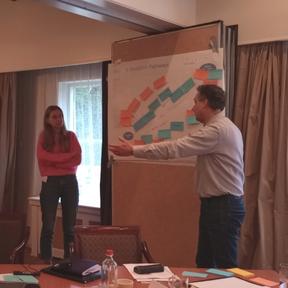
VEO: “Virus research without laboratory animals is better for animals and people”
VEO is a research team from the Amsterdam UMC, which conducts research on human viruses using human organoids (mini-organs). They also want to test antiviral drugs for human viruses, as there is still no effective treatment for many viral diseases. “We use mini-organs of the respiratory tract, intestinal tract and brain to study the infection of human viruses in their natural environment,” says PhD student Giulia Moreni from VEO. And they also use these to test the efficacy of antiviral drugs against viruses in their natural hosts, to get reliable results that translate better to humans.
95% of antiviral drugs tested in laboratory animals fail in humans
Data show that the predictive value of antiviral drugs tested in laboratory animals is very low. 95% of antiviral substances that have been successfully tested in animal models fail in humans. This is because viruses that cause diseases in humans often do not infect animals naturally. In studies, animals are therefore modified to be susceptible to infection by human viruses. Drugs are consequently tested in a very different environment from what they are used for.
“Moving to animal-free research is not only an ethical issue, although that is extremely important,” says Giulia, “but it is also an issue of accuracy and reliability of results.” VEO wants to save human lives and if that can be improved while also saving animal lives, they certainly want to play a role in that. An animal-free future within scientific research awaits us.
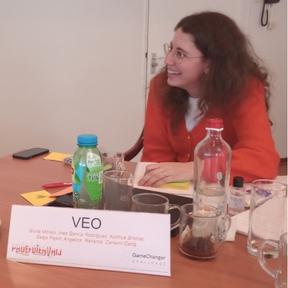
Chippoids and their multi-organ-on-chip system for kidney research without animal testing
Chippoids is a research team from the UMC Utrecht. This team is developing a unique multi-organ-on-chip system of the kidney and liver, for which researchers use human organoids. “These advanced research models show that potential drugs for kidney damage can be studied very well without conducting animal experiments,” explains Dr Bas van Balkom of Chippoids. He also explains that these models probably provide even more insights into how organs affect each other. And because of these models, fewer laboratory animals are needed for this kind of research.
“Not animals, but human cells!”
“I have done laboratory animal research in the past, but never felt comfortable with it,” Bas explains. He immediately recognised the harm that it does to animals, and he also wondered whether the things that researchers see in animals also apply to humans. After all, an animal is not a human being. Chippoids’ research addresses these two drawbacks: there animals will be used, and instead they use human cells! Bas loves to brainstorm on how we can really achieve a future without laboratory animals.
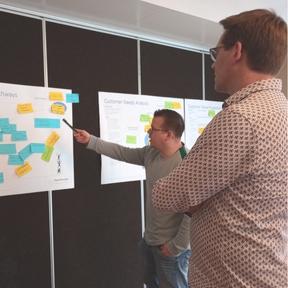
Animal-free innovations have more impact when they are brought to market
The teams are in complete agreement about the value of the Proefdiervrij Venture Challenge and their participation. Namely that they are learning how to set up a company that has an impact on animal-free innovations, and that they are also learning from each other as teams during the challenge.
“The Proefdiervrij Venture Challenge teaches us to step out of our familiar scientific comfort zone and think more like a product developer,” says Lotte from Fybrix. Jaap from ARTIC agrees. He sees the Proefdiervrij Venture Challenge as a kind of pressure-cooker, constantly pushing you outside your comfort zone.
The interaction with the other teams is also very appreciated by all teams. Giulia indicates they got new ideas from other participants and that it is great to network with researchers. “It’s awesome to take on this challenge with such a nice group of people, all of whom want to make an impact on laboratory animal use!” agrees Bas. And the teams think this is the most important aspect: By commercialising non-animal innovations that emerge within academia, they become available to a wider audience, and can also generate more impact.
The teams of the Proefdiervrij Venture Challenge inspire us, and more importantly, others. They prove that animal-free science has the future. Thank you Lotte, Jaap, Giulia and Bas for taking the time to answer our questions! We wish you all the best with your wonderful work and together we can increase our impact on a world without animal testing.

